Your Emails going to SPAM? Don’t worry, It’s OK.
It is very common for emails to go land in the spam folder for a new sender with a new SMTP server (Email Server), new IP & Domain.
Even if all technical aspects such as SPF, DKIM, DMARC, RDNS, No Blacklists and 10/10 Score on Mail-Tester.com are in place. your emails may land in spam.
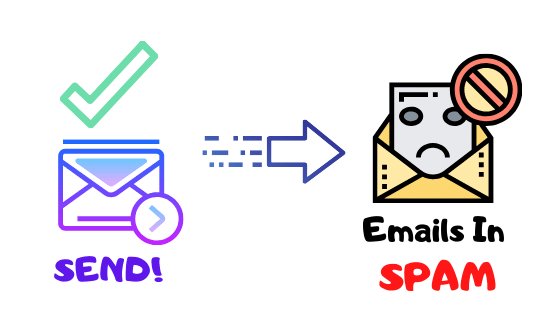
When you build a New SMTP Server with a new IP Address, or when you subscribe to an SMTP Service Like Amazon SES with a Dedicated IP, and Before You can Start Sending any Email Marketing Campaigns, you have to warm up your IP Address.
Also, you need to warm it up if you left your IP without sending any email for more than 30 days or so.
So, SMTP warm-up is somehow a continuous process.
What is Warming Up IP?
When you have a new Brand IP Address for your SMTP, this IP will have no Reputation on the internet, and ISPs (internet service providers) doest know this IP. SO IP warmup is the practice of building Your Reputation on The Internet by gradually increasing the volume of mail sent with your IP address according to a predetermined schedule.
When an ISP notices an email suddenly coming from a new IP address, they will immediately begin evaluating the traffic coming from that IP.
Since ISPs treat email volume as a key in determining spam, it is best to start sending a low email volume, then increasing up your way up to more significant amounts.
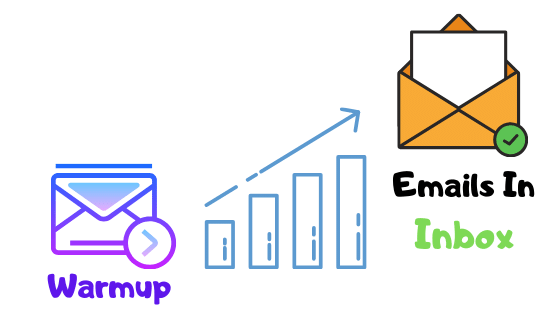
This gives the email providers a chance to carefully observe and analyze your sending habits and volumes and record how your recipients engage with your email.
In general, Warming up takes between 2-10 Weeks according to your scenario and the number of emails you want to send per day.
How do ISPs evaluate your emails and Reputation?
When you start the warming up process, ISPs will Evaluate your Reputation according to three Main Factors:
- Bounce Rate: When you send an email campaign, you need to ensure that your emails are valid emails, High bounce rate will destroy your reputation.
- Spam Traps: even a very low percentage of spam traps can blacklist you!
- Spammy Content: Your Message content is essential; ISPs will check if you are using any spammy keywords or blacklisted links.
- User Interaction: How Recipients are interacting with your emails, if they are reporting you as spam, then this is a real problem!
Warming Up IP in Action (Examples)
Ok, now after we have the big picture warming up SMTP, let’s go with some examples and real scenarios and understand how the operation works:
Please note: These sample schedules are intended to be a suggestion only. Every sender is different.
1- 1000 Emails Per day: this is not a big deal, you start by sending 20 emails the first day, then increasing gradually to reach 1K in about 7-10 days. The Schedule is described in the following Table:
| Warmup Day | Emails To Send |
| 1 | 20 |
| 2 | 50 |
| 3 | 100 |
| 4 | 300 |
| 5 | 500 |
| 6 | 700 |
| 7 | 900 |
| 8 | 1000 |
2- 10K Emails Per Day: Now, in this scenario, we do the same thing, but with a more extended schedule, check the following table:
| Warmup Day | Emails To Send |
| 1 | 20 |
| 2 | 50 |
| 3 | 100 |
| 4 | 300 |
| 5 | 800 |
| 6 | 1200 |
| 7 | 1800 |
| 8 | 2200 |
| 9 | 3500 |
| 10 | 5000 |
| 11 | 6500 |
| 12 | 7500 |
| 13 | 9000 |
| 14 | 10000 |
3- 50K Emails Per Day: Now 50K per day is considered somehow a Big Number.
As a little advice, and to make things easier, always split Large Volume Warmup campaigns into smaller ones, like in our case split it into three schedules:
- Reach 10K emails.
- Reach 30K emails.
- Reach 50K emails.
You may say, this will make the warm-up schedule longer, maybe yes, but in my experience in this way, you can monitor and manage your warming up campaigns easily and get better results.
So if you were warming to 10K, the number of emails would be less, and you can see and monitor the user interaction and Bounce rate on a smaller amount of emails, which will make the picture clearer.
I hope you got the point.
Warm up IP Schedule Generator
Then, Select Your Email List Size, and Click Generate! And See the Magic
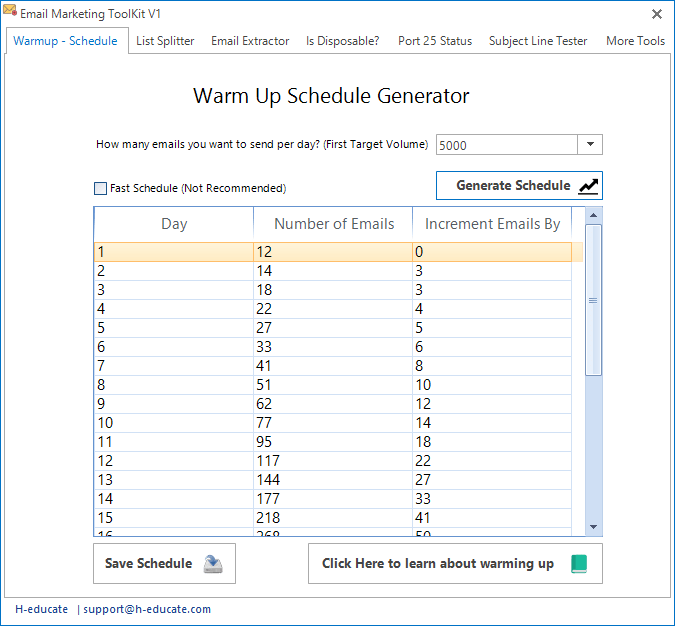
Save the Schedule, and Good Luck! ✔️
Email Volume and Timeline
For IP warm-up, the warmup schedule, the Sending Volume is different for all senders.
The number of emails you send depends on your own total email volume, some may require to send 100 emails per day, and others may need 1M per day!
But in any case, you must send enough email at enough frequency so that your email reputation can be tracked.
Also, You have to know something very important, Most reputation systems only store data for 30 days, so you should not go 30 days or more without sending on an IP. If you do, then you will need to warm it up again.
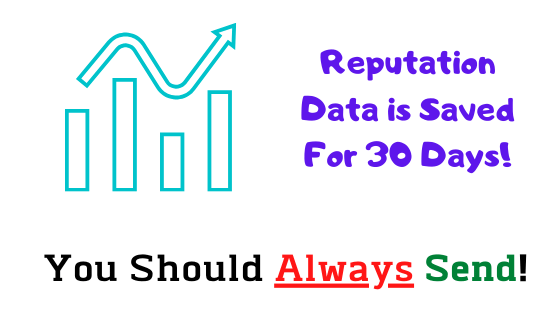
This is why I said first that warming up an IP is a continuous process.
Marketing VS Transaction Emails
Transactional Email
If you want to use your SMTP server to send Transactional Emails (Password resets, invoices, welcome emails…) In this case, you may be a new business, or an established one.
Established businesses:
If you are already sending a lot of emails, and you decide to move to an ESP for the first with dedicated IP or build your own SMTP, you should migrate you’re sending a little bit at a time.
One way to do this is to split your traffic and move small portions of it to the new IP over time.
Alternatively, if you are already maintaining multiple mail servers, you can move your servers over to your new IP one at a time.
New businesses:
Typically, the organic growth of your business will, by its nature, create an ideal ramp. Since transactional email is usually dependent on the number of users you have, the growth in your customer base will create a nice, comfortable growth curve in your email volume. So you will not worry about warming up in this case.
But still, it’s important to monitor your reputation and your system to see how it’s performing. (I will talk about monitoring reputation later)
Email Marketing Campaigns
The Simplest Approach is to Estimate your total monthly email volume and divide that number by 30.
Then, try to spread your sending evenly over the first 30 days, based on that calculation. For example: if you will send 90,000 emails/month, you should start off sending 3,000 per day over the first month and so on.
Maintain Warm Up across ALL ISPS
It’s important to remember that you must maintain a steady volume during the entire warm up period for each each ISP.
So Remember to Split up your warm up schedule so each ISP is receiving a comparable amount of mail each day—don’t warm up Gmail on Monday, Yahoo! on Tuesday, etc.—evenly disperse your mail to each ISP on each day of warm up.)
If not, your sending activity looks sporadic and you won’t be able to build a solid reputation.
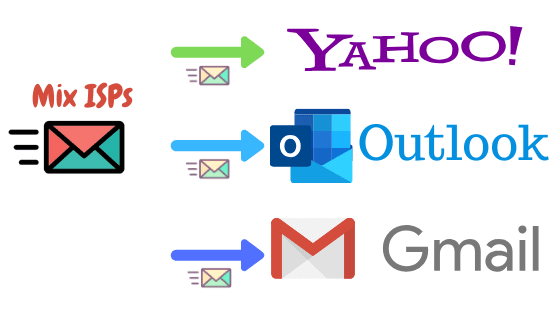
Just mix things up! , don’t send to one ISP at a time.
Warming up IP Tips:
There are some crucial tips that you have to Follow while warming up IP:
- Don’t ever start before you get a High sending score: Ensure this by configuring SPF, DKIM, rDNS, and other Technical Details that I Explained in Detail in my courses, if you are interested.
- Don’t ever send promotional emails in the warmup period. You need the highest engagement rates, so send transactional emails or maybe some valuable info.
- Mail only to your top active subscribers first. Ensure almost 0% bounce rates.
- Don’t rotate or switch IPs during warmup. Rotation is a sign of spam.
- In your emails, add a clear link for people to unsubscribe.
- Add Email Signature that makes your emails look trusted.
- Mix your campaigns with premium SMTP services – this will give better user interaction and domain reputation.
- Join News Letters. This will make a lot of emails come to your inbox and give you a Higher domain reputation.
- Send to your friend’s list and ask them to report you as non-spam and tell them to reply.
- Try your best to build an audience and warm up to that audience. In this way, you will achieve the best user interaction and will make the “warming up process” a lot easier.
- Monitor your campaigns accurately, and be sure to keep your bounce rate below 2% by validation your emails (I do use Debounce Email validation service to validate my emails which cheap and powerful)
How to Monitor IP Reputation?
So, you need to monitor your Bounce rate, user feedback, and reputation score.
Some Services Like Amazon SES, Spark post has a built-in reputation system that shows your Bounce Rate and User Interaction.
IN some cases you will be able to monitor bounces and user feedback through the mailing system like in MailWizz.
You can also monitor open, unsubscribe, and open rates. This will give you an indication of how users are interacting with your messages.
Monitor Reputation?
Having the right tools for checking the IP reputation
is half way to success. Here are some tools and
services you can use:
- Senderscore.org by Return Path. The score ranks from 0 to 100, 100
being the best. It tells you how you’re performing. Typically it’s
recommended that you maintain your sender score of 90 or better. - Senderbase.com by Cisco. It tells you how your reputation is across
all the network providers Cisco manages. The reputation score is
grouped into Good, Neutral, and Poor. - Postmaster.live.com. Microsoft’s Smart Network Data Services give
you the information about the traffic originating from your IP address
such as the volume of sent emails, complaint rates, and spam trap
hits. - Postmaster.google.com. Gives access to your domain’s data on Google Search Console.
- Postmaster.aol.com. Check your IP reputation and rates it as “bad”, “neutral”, and “good”.
Conclusion:
IP warmup is the act of sending emails gradually to build a good reputation and reach the recipient’s inbox. So, be careful, follow the guidelines and tips listed above, to achieve the best results.
Good Luck, if you have question or clarifications, you can comment below.
Hope You The Best!
